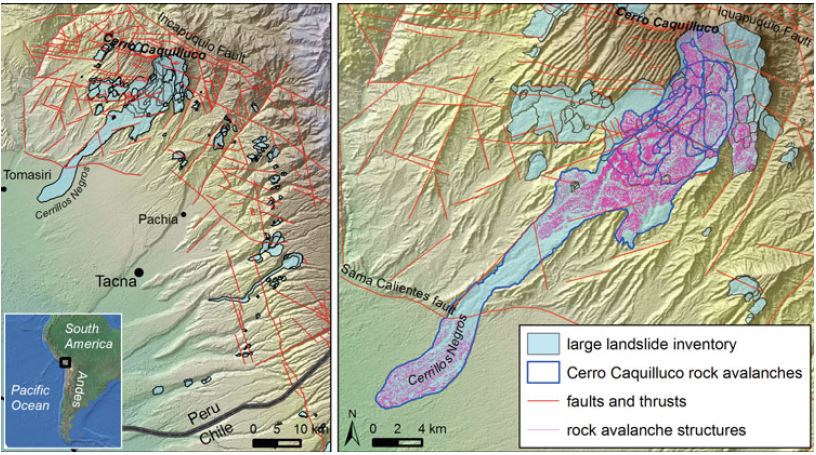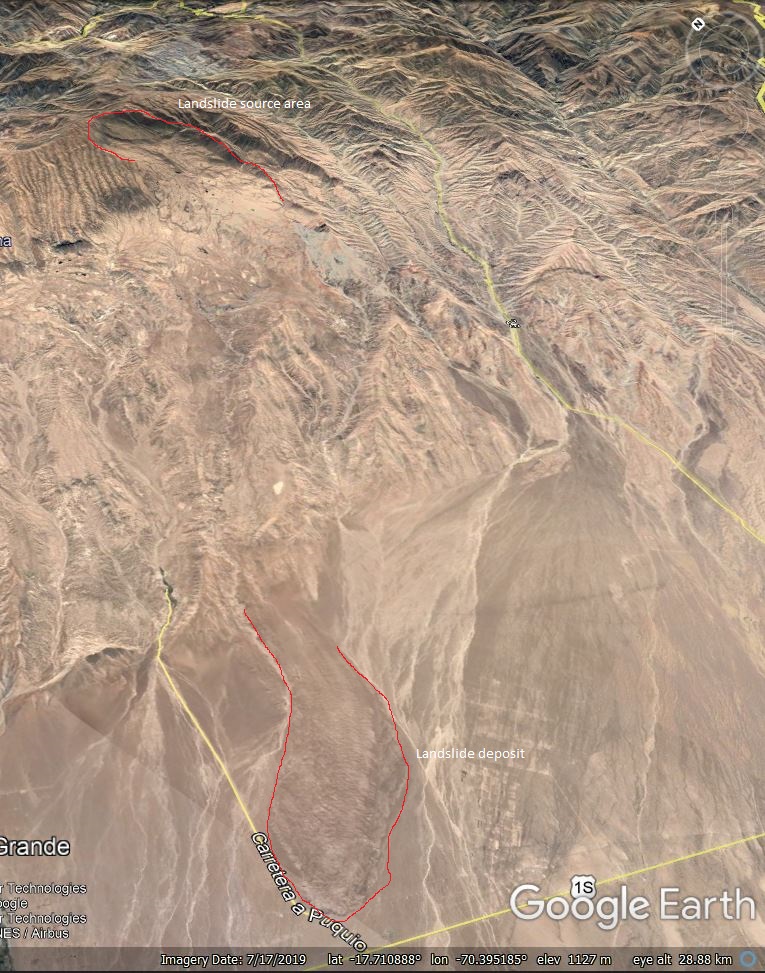Environment & Energy
Related: About this forumThe Cerro Caquilluco-Cerrillos Negros rock avalanches in Peru
6 FEBRUARY 2020
Posted by Dave Petley
Giant rock avalanches are rare but fascinating events. The scale of the largest is hard to imagine. To generate such landslides certain conditions need to be met, most notably high topography with steep gradients.
In a short paper published a few years, Crosta et al. (2015) described the giant Cerro Caquilluco–Cerrillos Negros rock avalanches in the southern part of Peru, located in the vicinity of -17.63, -70.19. This is the site of the so-called Arica Bend, which has one of the largest relief contrasts on Earth – the location is close to the coast; offshore the subduction trench extends to 6000 m below sea level, whilst the mountain tops extend to 6,300 metres above sea level. In this area, the research team have identified a number of giant rock avalanches, some of the largest mapped to date.
The figure below, from Crosta et al. (2015), shows the rock avalanches mapped in this area:-

The Cerro Caquilluco–Cerrillos Negros Giant Rock Avalanches, from Crosta et al. (2015).
.
The largest of these rock avalanches, at Cerrillos Negros, has a linear distance from the crown of the landslide to the toe of the deposit of 41 km; the total distance traveled along the track is about 43 km. This landslide is shown in the Google Earth image below – I have annotated the landslide scar and the lower part of the landslide deposit:-

More:
https://blogs.agu.org/landslideblog/2020/02/06/cerrillos-negros/
hunter
(38,317 posts)The role that water and air plays is highly debated, maybe more so now that similar landslides are described on Mars.
A quick google search turns up this example:
https://agupubs.onlinelibrary.wiley.com/doi/abs/10.1002/2017JE005398
I think it's interesting how studies of martian geology might give us a better understanding of earth's geology.
Judi Lynn
(160,545 posts)Peru has been a storehouse of glaciers so long, and they are going through rapid melting now, as in Bolivia.
Your information most certainly reminds us of the information which has already been revealed about water stored in the soil on Mars in areas already studied.
Looking for photos of Martian landslides, and there are great ones at google images, I found this link which says ice can work as a lubricant in the soil, which I never would have guessed.
So glad you encourage people to look more closely and think about things longer! Your comments opened a door for some, I'm sure.
Here's a link to "google images" for great photos of Martian landscapes already shared:
https://tinyurl.com/s4ebz9q
and a helpful article with photos of Mars, and Alaska:
https://www.researchgate.net/publication/320926736_Modelling_Martian_landslides_dynamics_velocity_and_paleoenvironmental_implications